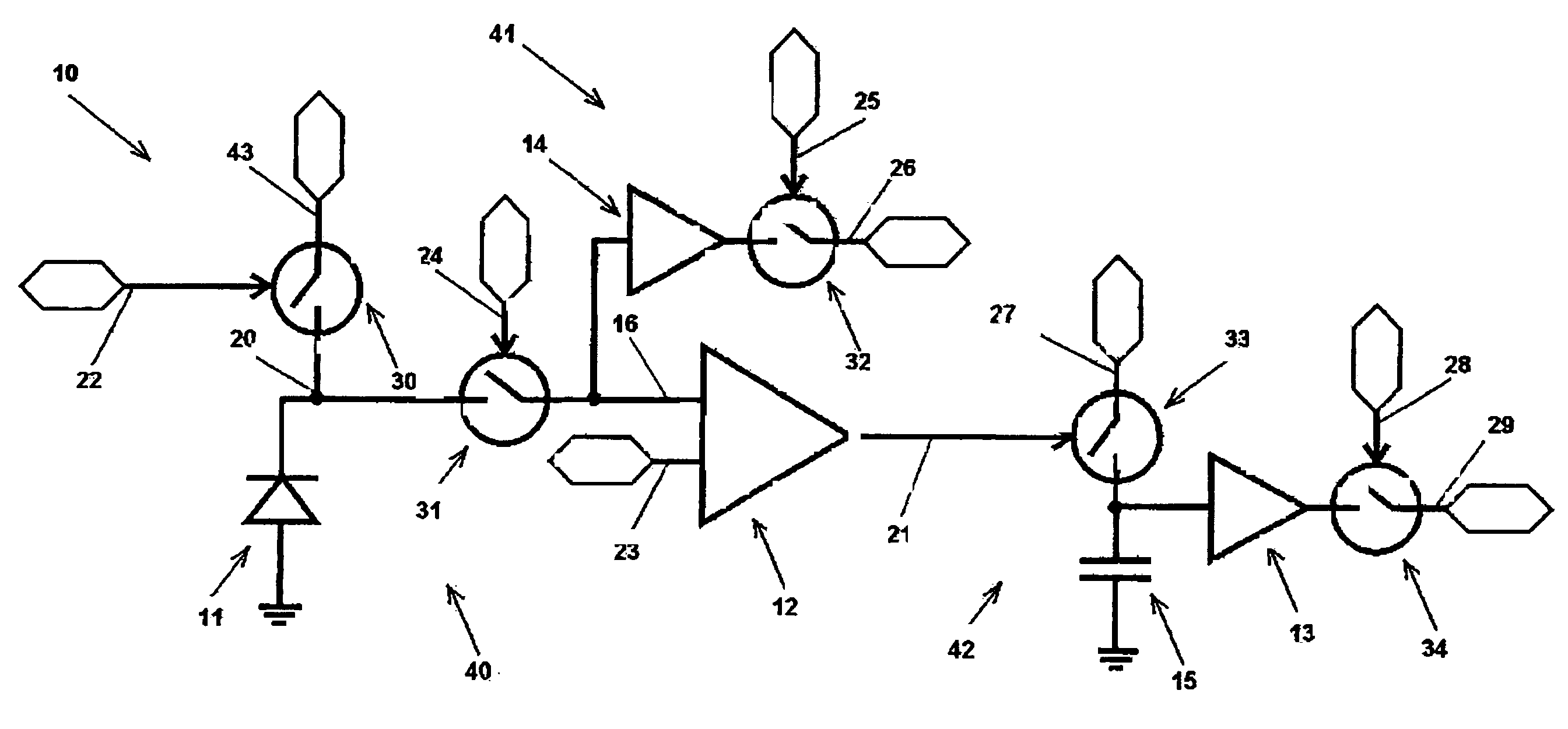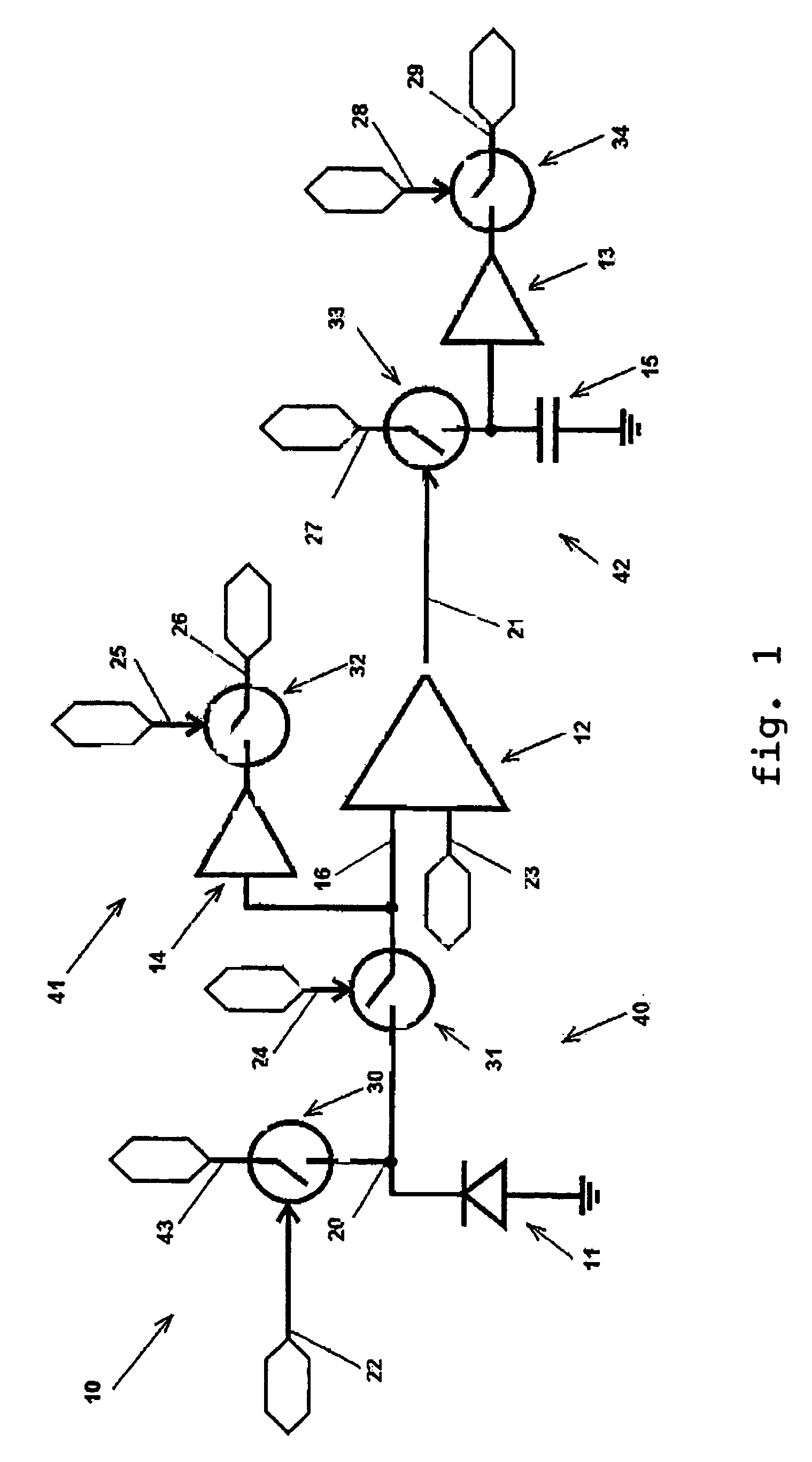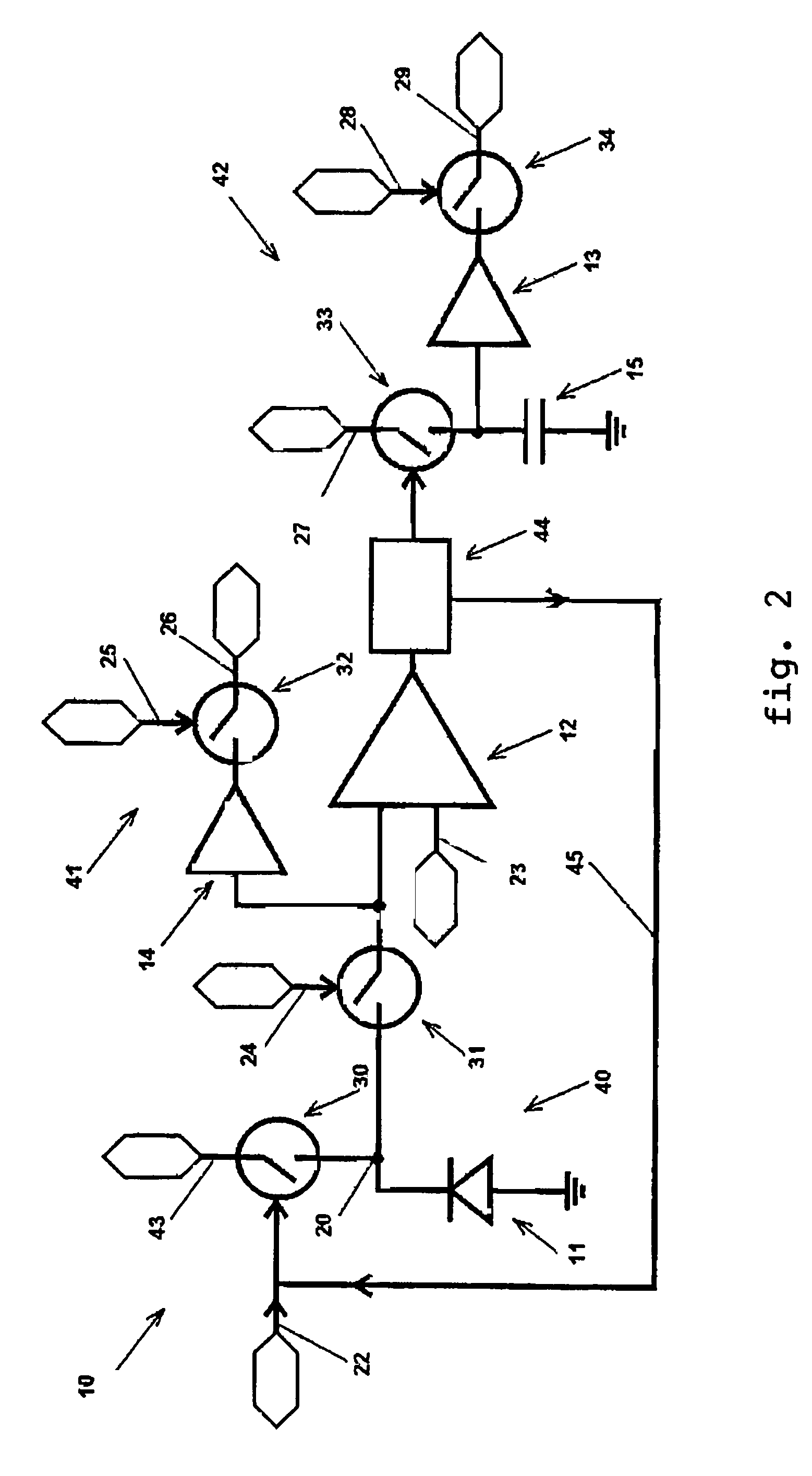Photo-sensitive element used in electro-optical sensors to detect and convert incident light into an electrical signal
a photosensitive element and electrooptical sensor technology, applied in the field of photosensitive elements used in electrooptical sensors, can solve the problems of not being able to arbitrarily select a sub-window inside the matrix sensor, not being able to operate in an optimal manner,
- Summary
- Abstract
- Description
- Claims
- Application Information
AI Technical Summary
Benefits of technology
Problems solved by technology
Method used
Image
Examples
Embodiment Construction
[0051]With reference to FIG. 1, a photo-sensitive element 10, or pixel, according to the present invention comprises:[0052]an element to detect and convert 40 the light signal, which comprises a photodiode 11, inversely polarized, a reset switch 30 made using semiconductor technology and driven by means of an external reset signal 22 which allows to connect an external signal 43 to a photo-sensitive node 20, and a first de-coupling switch 31 made using semiconductor technology and driven by means of a shutter control signal 24;[0053]a comparison element 12 to which two signals arrive, a threshold signal 23 and a signal 16 arriving from the photodiode 11 by means of the first de-coupling switch 31;[0054]two reading channels, respectively first 41 and second 42, of which the first 41 consists of an active amplification element 14 and a selection switch 32 made using semiconductor technology, driven by a first external selection signal 25 which leads the output signal onto a reading li...
PUM
 Login to View More
Login to View More Abstract
Description
Claims
Application Information
 Login to View More
Login to View More - R&D
- Intellectual Property
- Life Sciences
- Materials
- Tech Scout
- Unparalleled Data Quality
- Higher Quality Content
- 60% Fewer Hallucinations
Browse by: Latest US Patents, China's latest patents, Technical Efficacy Thesaurus, Application Domain, Technology Topic, Popular Technical Reports.
© 2025 PatSnap. All rights reserved.Legal|Privacy policy|Modern Slavery Act Transparency Statement|Sitemap|About US| Contact US: help@patsnap.com



